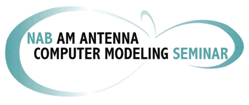|
HD
Radio “Exporter” Session at The NAB Radio Show
One
of the most important parts of an FM IBOC digital radio installation
is the “Exporter.” It is the Exporter that brings together
all of the various pieces of the HD Radio signal–main channel
audio, multicast audio, program service data (PSD) like song title
and artist, and more–and combines them into a form suitable
for transmission over the RF channel. The block diagram below
shows the Exporter (on right) and (at a high level) how it interconnects
with other parts of the broadcast facility.

Some of the specific
functions of the Exporter include:
-
HDC encoding of the main channel audio –
HDC is the proprietary perceptual audio coding algorithm
developed by iBiquity and is used for encoding of program audio
within the HD Radio system. While perceptual coding of multicast
channels is accomplished elsewhere (usually the “Importer,”
also shown in the block diagram) the main channel audio signal
is encoded here;
- Multiplexing
– the Exporter accepts as inputs all of the various signals
which can be included in an HD Radio transmission and combines
them, adding various formatting and overhead information so
that the resulting bit stream is ready for orthogonal frequency
division multiplexing (OFDM) modulation onto the multiple
RF carriers used in the HD Radio broadcast signal;
- Diversity
delay of analog FM signal – the HD Radio system incorporates
“time diversity” by introducing a delay of approximately
8 seconds between the main channel audio analog and digital
signals. Time diversity, combined with the “blend to analog”
feature of HD Radio receivers, adds robustness to the transmission
since brief interruptions in the signal (due to blockage or
interference) can be eliminated (at the receiver) by switching
(“blending”) between the analog and digital versions
of the signal (note that time diversity protection is available
for the main channel audio signal only). While some installations
introduce this time delay in the audio processor preceding the
Exporter (as shown in the block diagram), it is also possible
to introduce this delay within the Exporter itself.
NAB,
along with partners iBiquity Digital Corporation (developers of
HD Radio digital broadcasting) and four broadcast equipment manufacturers–Broadcast
Electronics, Continental, Harris and Nautel–earlier this
year announced the completion of an NAB-funded project resulting
in an advancement in HD Radio Exporter technology. The project,
started in 2006, was overseen by the NAB HD Radio Technology Advancement
Task Force. The Task Force is focused on accelerating the transition
to digital radio.
This
new technology, called the "Embedded Exporter," reduces
the size and cost of HD Radio transmission facilities by eliminating
the PC-based design of earlier-generation Exporters and replacing
it with a firmware-based “embedded” implementation.
In addition to the lower cost and size, the Embedded Exporter
is significantly more reliable and stable than its predecessors,
and it now becomes possible for manufacturers to incorporate Exporter
functionality in other products such as exciters. Further, because
of NAB's contribution to this effort, NAB members receive an additional
discount on these already cost-reduced products.
A
panel at the upcoming NAB Radio Show (September 17-19, 2008, Austin,
TX, www.nabradioshow.com)
will focus on these new Embedded Exporter products and highlight
for broadcasters the advantages of this new implementation. Moderated
by NAB Director, Advanced Engineering David Layer, representatives
from each of the four Embedded Exporter manufacturers will be
on hand to talk about the Exporter in general, and about their
first wave of Embedded Exporter products in particular (shown
in the pictures below). While each design is based upon the iBiquity
“reference,” significant product differentiation is
possible and already evident in these initial product offerings.
The
“Embedded Exporter Technical Panel” will include participation
by Tim Anderson, FM/Digital Radio Product Line Manager, Harris
Broadcast Communications; Daniel Dickey, Vice President, Engineering,
Continental Electronics Corp.; Ted Lantz, HD Radio Product Manager,
Broadcast Electronics, Inc. and Scott Martin, Head of Digital
Research, Nautel, Inc. It will be held Thursday, September 18,
2008 from 2PM-3:30PM in room 17A (on level 4) of the Austin Convention
Center. Additional information about The NAB Radio Show engineering
sessions is available online at www.nabradioshow.com/2008/conferences/EngineeringProgram.asp.

 NAB
AM Antenna NAB
AM Antenna
Computer Modeling Seminar
November 20-21, 2008
NAB Headquarters
Washington, DC
Don’t miss this opportunity for broadcast engineers to learn
the basics needed to utilize modeling software such as MININEC
and nodal analysis for designing performance-optimized AM directional
antenna phasing and coupling systems and proving the performance
of directional antenna patterns.
You
will learn about:
- Moment
Method Modeling Basics
- DA Proofing
Using Moment Method Modeling
- Overcoming
Limitations of Using Field Strength Measurements for DA Proofs
- State
of the Art in Phasing System Design Nodal Analysis of AM DA
Phasing and Coupling Systems
- Pattern
Design Considerations for Optimum Performance
AM
antenna experts Ron Rackley and Ben Dawson, along with antenna
modeling software specialist Jerry Westberg, will lead the seminar
demonstrating how moment method modeling makes analysis of actual
tower current distributions possible and how a model can be used
to proof an array provided the proper criteria are considered.
All instructors are well known in the radio industry as experts
in the field of directional antenna design and maintenance. Their
decades of experience offer station engineers an opportunity to
learn techniques, tips and tricks that can be immediately useful.
Seminar
fee: $395.00 (NAB members) and $495.00 (non-members). For
more information on the curriculum, how to register or housing
go to AM
Antenna Computer Modeling Seminar on the NAB Web site or call
Sharon Devine at (202)-429-5338. Register now for the NAB AM Antenna
Computer Modeling Seminar!


The August 11, 2008 Radio
TechCheck is also available in an Adobe Acrobat file.
Please
click
here to read the Adobe Acrobat version of Radio TechCheck.
|

